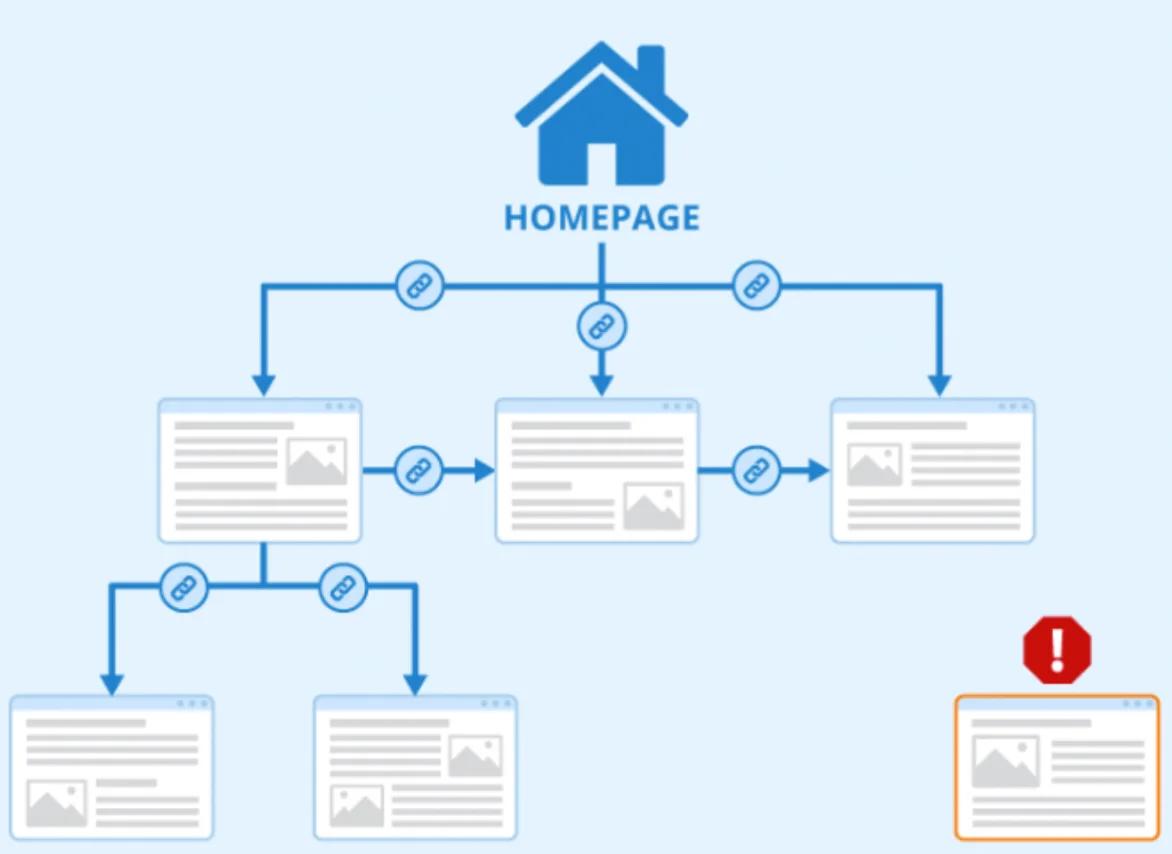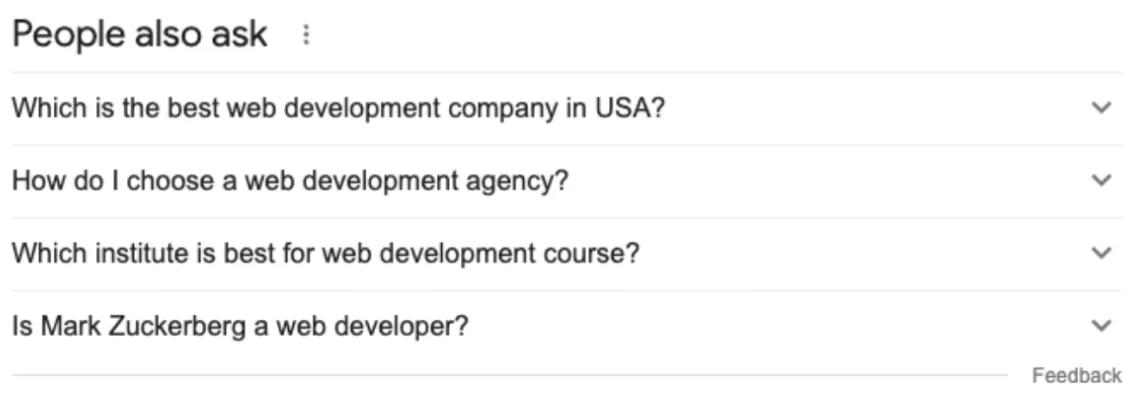Several aspects of SEO need to work in unison to achieve results. One important aspect of SEO is technical SEO. Unfortunately, when most B2B companies speak about SEO, they tend to gravitate towards either on-site SEO or off-site SEO.
Far too often, technical SEO is only discussed when page speeds are dreadful. While page speed is important, there are many other aspects of technical SEO that should be considered
Let's talk about three technical optimizations B2B companies tend to ignore, which hinder their ability to compete against competitors.
1.) Orphan page optimization
Orphan pages are website pages that are not linked to any other internal page or section of a site experience.
When companies produce several pages, they tend to skip over inserting links to relevant internal pages, causing orphan pages that hinder SEO.

Orphan page
In order to achieve optimal search results, it is important to discover and optimize orphan pages, as they are typically not indexed on search results.
How orphan pages decrease your SEO
Orphan pages impact your SEO efforts negatively from three aspects.
Crawling and indexing: Search engines use links to crawl and index web pages. Without links pointing to an orphan page, it will not be discovered by search engines, leading to poor visibility and ranking.
Relevance: Search engines use links to understand the relationship and relevance of pages on a website. Orphan pages have no context or relationship to other pages, making it difficult for search engines to understand their relevance to specific keywords and topics.
User experience: Orphan pages can also have a negative impact on the user experience. If a user stumbles upon an orphan page and there are no links to other relevant pages on the site, they may quickly become frustrated and leave the site.
How to fix orphan pages to increase your SEO
Fixing orphan pages is a simple two-step process:
1. Identify orphan pages: Perform a site crawl on your website using a tool like Screaming Frog that will identify unlinked pages.
2. Add internal links: Insert relevant internal links to the orphan pages the site crawls will discover.
Yes, it is that simple. But you will be surprised how many orphan pages exist on B2B sites. Each orphan page reduces your ability to rank for keywords which is a shame.
At Webstacks we make sure to account for every page on your website by creating an inner-connection (content clusters) to relevant pages that form robust networks that increase your visibility in search engines. If you would like to strategize on how to improve your search visibility give us a call today.
2.) Implementing Hreflang for international SEO
People use search engines worldwide, not just in the US. So if you are a B2B business not tied to localized search results, you should use Hreflang to improve your international SEO efforts.
What is Hreflang, and how does it help with SEO?
Hreflang is an HTML attribute that helps search engines understand a web page's language and intended geographical audience.
Hreflang helps search engines serve the correct version of a page to users based on their location and language preferences.
Does Hreflang automatically translate web pages?
Hreflang does not automatically translate web pages. However, if you have multiple versions of the same page in different languages.The Hreflang tag tells search engines which page to index based on the specific geographic location of users using search queries.
How do you implement Hreflang?
To implement Hreflang your web developer will need to place the HTML attribute in the <head> section of a web page.
Please note: The code is variable based on specific geo targets. This particular Hreflang example code is for Spain since the country code is ES.
Here is the code:

Hreflang tag
Depending on your specific country code target, you will switch ES with different country codes specific to the country.
Here is a list of country codes. By translating webpages for international SEO and applying the Hreflang attribute, you can:
- Increase your engagement
- Geo-target your content
- Potentially rank for country-specific keywords
- Increase brand awareness efforts
Additionally, conversion rates could also see a dramatic increase. Ranking for a larger number of search queries in international markets can lead to increased opportunities to attract traffic, which can be converted into sales.
Are you taking advantage of the Hreflang HTML attribute? If not, you are truly leaving money on the table.
3.) Implementing Schema markup types
Schema is already a crucial aspect of SEO and it will only become more critical in the future. Schema helps create featured snippets within search results that look like this:

FAQ Schema
Looks familiar, right?
How Schema will greatly impact your SEO in 2023
Schema will become even more critical to success due to the AI movement. Search engines are a prime use case for AI innovation, so it’s no surprise that Bing implemented ChatGPT into search results. Google is also rolling out Bard, which is a competitor to ChatGPT.
Since both AI tools use natural language processing, it is highly likely that AI tools will reference Schema markup types like FAQ’s depicted above and several other markup types for queries entered into search.
Since multiple Schema types are available, it is advantageous for B2B companies to optimize for as many markup types as possible.
For instance, AI tools could potentially reference tables based on the query entered into search. If so, you would want to implement the Schema markup type for a table.
How do you implement Schema?
Schema is implemented through structured data formats like Microdata, RDFa, and JSON-LD. It is best to consult with a developer to implement Schema properly.
Fortunately, web development is our bread and butter at Webstacks. If you want to future-proof your site, we can help you implement all the relevant Schema markup types for your B2B business to account for every potential opportunity to capitalize on search queries entered into search engines.
In conclusion
Several technical optimizations need to occur on a site to ensure that you are taking advantage of all the opportunities to increase your likelihood of ranking.
The technical optimizations discussed today are often overlooked, yet they're powerful enough that B2B businesses must embrace them.
At Webstacks we continually look for opportunities to optimize our clients' sites. If you would like to explore some strategies, contact us today.




